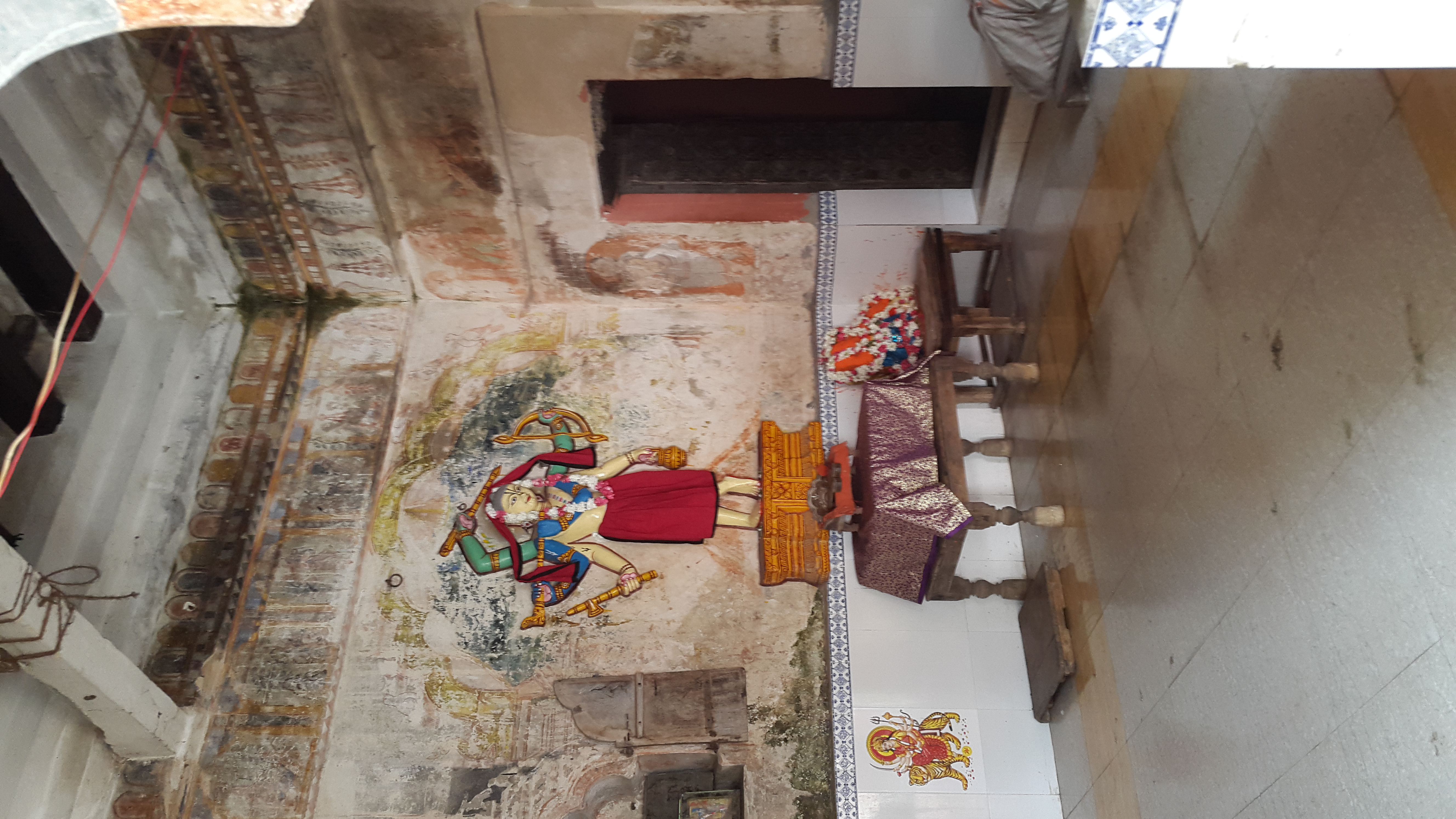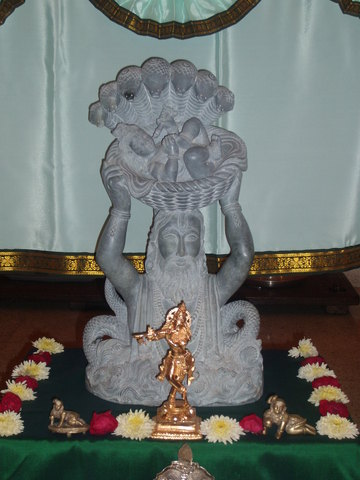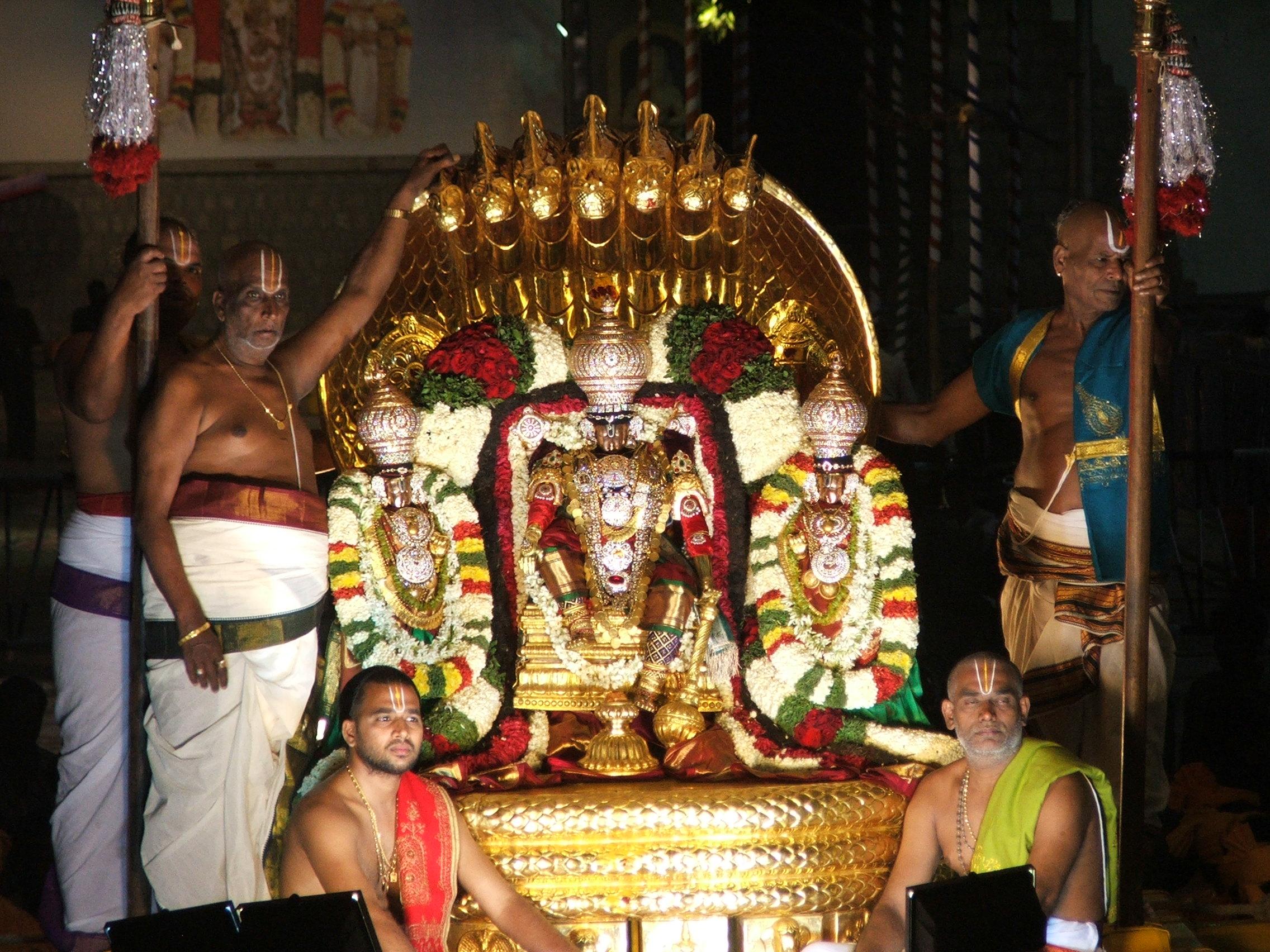|
ISKCON Temple, Bangalore
Sri Radha Krishna-chandra Temple ( kn, ಶ್ರೀ ರಾಧಾ ಕೃಷ್ಣ ಮಂದಿರ) is one of the largest Krishna-Hindu temples in the world. It is situated in Bangalore in the Indian state of Karnataka. The temple is dedicated to Hindu deities Radha Krishna and propagates Monotehism as mentioned in ''Chandogya Upanishad''. History In May 1997, Bangalore ISKCON Temple was inaugurated by the ninth president of India—Shankar Dayal Sharma. About temple Features of the temple There is a gold-plated dhwaja-stambha (flag post) 17 m (56 ft) high and a gold plated kalash shikhara 8.5 m (28 ft) high. There is free distribution of Sri Krishna prasadam to all visitors during the darshana hours. Shrines (altars) ISKCON Bangalore has six shrines: # Main deities is of Radha-Krishna # Krishna Balrama # Nitai Gauranga (Chaitanya Mahaprabhu and Nityananda) # Srinivasa Govinda (also known as Venkateswara) # Prahlada Narasimha # Srila Prabhupada Darshan ... [...More Info...] [...Related Items...] OR: [Wikipedia] [Google] [Baidu] |
India
India, officially the Republic of India (Hindi: ), is a country in South Asia. It is the seventh-largest country by area, the second-most populous country, and the most populous democracy in the world. Bounded by the Indian Ocean on the south, the Arabian Sea on the southwest, and the Bay of Bengal on the southeast, it shares land borders with Pakistan to the west; China, Nepal, and Bhutan to the north; and Bangladesh and Myanmar to the east. In the Indian Ocean, India is in the vicinity of Sri Lanka and the Maldives; its Andaman and Nicobar Islands share a maritime border with Thailand, Myanmar, and Indonesia. Modern humans arrived on the Indian subcontinent from Africa no later than 55,000 years ago., "Y-Chromosome and Mt-DNA data support the colonization of South Asia by modern humans originating in Africa. ... Coalescence dates for most non-European populations average to between 73–55 ka.", "Modern human beings—''Homo sapiens''—originated in Africa. Then, int ... [...More Info...] [...Related Items...] OR: [Wikipedia] [Google] [Baidu] |
Chaitanya Mahaprabhu
Chaitanya Mahaprabhu (; born Vishvambhar Mishra) was a 15th-century Indian saint who is considered to be the combined avatar of Radha and Krishna by his disciples and various scriptures. Chaitanya Mahaprabhu's mode of worshipping Krishna with ecstatic song and dance had a profound effect on Vaishnavism in Bengal. He was also the chief proponent of the Vedantic philosophy of Achintya Bheda Abheda Tattva. Mahaprabhu founded Gaudiya Vaishnavism ( the Brahma-Madhva-Gaudiya Sampradaya). He expounded Bhakti yoga and popularized the chanting of the Hare Krishna Maha-mantra. He composed the ''Shikshashtakam'' (eight devotional prayers). Chaitanya is sometimes called Gauranga or Gaura due to his molten gold–like complexion. His birthday is celebrated as Gaura-purnima. He is also called Nimai due to him being born underneath a Neem tree. Life '' Chaitanya'' means "one who is conscious" (derived from Chetana, which means "Consciousness"); ''Maha'' means "Great" and ''Prabhu' ... [...More Info...] [...Related Items...] OR: [Wikipedia] [Google] [Baidu] |
Radhastami
Radhashtami is a Hindu holy day commemorating the birth anniversary of the goddess Radha, the chief consort of the god Krishna. It is celebrated with great fervor in her birthplace Barsana and the entire Braj region on the eighth day (Ashtami) of the Shukla Paksha of the month of Bhadrapada. The festival suggests that goddess Radha is very much an aspect of the cultural-religious faith system governing social life of people. History In the ''Viṣṇu Khaṇḍa'' of the Skanda Purana, it is mentioned that God Krishna had 16,000 gopis out of which Goddess Radha was the most prominent one. According to Hindu calendar, Radharani was born on the 8th day (Ashtami) of the bright fortnight (Shukla Paksha) in the month of Bhadrapada in Anuradha Nakshatra at 12 noon in town of Barsana (Rawal), Uttar Pradesh, India. As per the Gregorian calendar, her birth date was believed to be 23 September 3221 BC- a Wednesday. Goddess Radha was found on the golden lotus in the pond by king Vrishab ... [...More Info...] [...Related Items...] OR: [Wikipedia] [Google] [Baidu] |
Guru Purnima
Guru Purnima (Poornima) is a tradition dedicated to all the spiritual and academic Gurus, who are evolved or enlightened humans, ready to share their wisdom, based on Karma Yoga. It is celebrated as a festival in India, Nepal and Bhutan by Hindus, Jains and Buddhists. This festival is traditionally observed to honour one's chosen spiritual teachers or leaders. It is observed on the Full Moon day (''Purnima'') in the Hindu month of ''Ashadha'' (June–July) as it is known in the Hindu Calendar. Articlpoornima.html "Guru Poornima (Vyas Puja)"As on 22 July 2013 on www.Sanatan.org The festival was revived by Mahatma Gandhi to pay tribute to his spiritual guru, Shrimad Rajchandra. It is also known as Vyasa Purnima, for it marks the birthday of Veda Vyasa, the sage who authored the Mahabharata and compiled the Vedas. Observances The celebration of Guru Poornima is marked by spiritual activities and may include a ritualistic event, ''Guru Pooja'', in honor of the Guru or teacher. Th ... [...More Info...] [...Related Items...] OR: [Wikipedia] [Google] [Baidu] |
Krishna Janmashtami
Krishna Janmashtami , also known simply as Krishnashtami, Janmashtami, or Gokulashtami, is an annual Hindu festival that celebrates the birth of Krishna, the eighth avatar of Vishnu. According to the Hindu lunisolar calendar, it is observed on the eighth tithi (Ashtami) of the Krishna Paksha (dark fortnight) of Shraavana Masa (according to the amanta tradition) or Bhadrapada Masa (according to the purnimanta tradition). This overlaps with August or September of the Gregorian calendar. It is an important festival, particularly in the Vaishnavism tradition of Hinduism. Dance-drama enactments of the life of Krishna according to the ''Bhagavata Purana'' (such as Rasa Lila or Krishna Lila), devotional singing through the midnight when Krishna was born, fasting (''upavasa''), a night vigil (Ratri ''Jagaran''), and a festival (Mahotsav) on the following day are a part of the Janmashtami celebrations. It is celebrated particularly in Mathura and Vrindavan, along with major Vaishn ... [...More Info...] [...Related Items...] OR: [Wikipedia] [Google] [Baidu] |
Ratha Yatra
Ratha Yatra (), or Chariot festival, is any public procession in a chariot. The term particularly refers to the annual Ratha Yatra in Odisha, Jharkhand, West Bengal and other East Indian states, particularly the Odia festival that involve a public procession with a chariot with deities Jagannath (Vishnu avatar), Balabhadra (his brother), Subhadra (his sister) and Sudarshana Chakra (his weapon) on a ratha, a wooden deula-shaped chariot. Ratha Yatra processions have been historically common in Vishnu-related (Jagannath, Rama, Krishna) traditions in Hinduism across India, in Shiva-related traditions, saints and goddesses in Nepal, with Tirthankaras in Jainism, as well as tribal folk religions found in the eastern states of India. Notable Ratha Yatras in India include the Ratha Yatra of Puri, the Dhamrai Ratha Yatra and the Ratha Yatra of Mahesh. Ratha Yatra of Guptipara and Santipur Hindu communities outside India, such as in Singapore, celebrate Ratha Yatra such as those ass ... [...More Info...] [...Related Items...] OR: [Wikipedia] [Google] [Baidu] |
Narasimha Jayanti
Narasimha Jayanti () is a List of Hindu festivals, Hindu festival that is celebrated on the fourteenth day of the Hindu calendar, Hindu month of Vaisakha. Hindus regard it to be the date the deity Vishnu assumed his Narasimha Avatar, avatara to vanquish the oppressive asura-king, Hiranyakashipu. Legend In Hindu mythology, Hiranyakashipu was the first wicked incarnation of Jaya-Vijaya, Jaya, one of the two doorkeepers of Vishnu's abode of Vaikuntha. After being cursed by the Four Kumaras, along with his brother, Vijaya, he chose to be born as an enemy of Vishnu thrice, rather than as a devotee of the deity seven times. After the death of his brother, Hiranyaksha, at the hands of Varaha, the third avatara of Vishnu, Hiranyakashipu swore revenge. The king performed a severe penance to propitiate the creator deity, Brahma, until the latter appeared to grant him a boon. The asura desired the inability to be slain neither inside his house nor outside, by day nor night, by any weap ... [...More Info...] [...Related Items...] OR: [Wikipedia] [Google] [Baidu] |
Brahmotsavam
Sri Venkateswara Swami vari Brahmotsavam or Srivari Brahmotsavam is the most significant annual fête celebrated at the Venkateswara Temple, Tirumala, Venkateswara Temple in Tirumala-Tirupati, Tirupati district, Andhra Pradesh, India. The feast lasts for one month during the Hindu calendar month of Asvina, Āśvina, which falls between the Gregorian calendar months of September and October. The ''Utsava-murti'' (processional deity) of the presiding deity, Venkateswara, and his consorts Sridevi and Bhudevi are taken on a procession on several ''vahanams'' on the streets surrounding the temple. The celebration attracts pilgrims and tourists from all over India and around the world. A ''Brahmotsavam'' is a cleansing ceremony in honor of Brahma, Lord Brahma, and the ceremony at Tirumala is the largest. Etymology The word ''Brahmotsavam'' is a combination of two Sanskrit words—''Brahma'' and ''utsavam'' (festival)—and Brahma reportedly conducted the first festival. ''Brahma'' al ... [...More Info...] [...Related Items...] OR: [Wikipedia] [Google] [Baidu] |
Sri Rama Navami
Rama Navami () is a Hindu festival that celebrates the birthday of Rama, the seventh avatar of the deity Vishnu. people from different parts of Jharkhand attended the world famous international Hazaribagh procession organized in the city every year on the occasion of Ram ramnavmi birt anniversary of Rama amid chants of Jai shri ram. Vaishnava tradition of Hinduism. The festival celebrates the descent of Vishnu as the Rama avatar, through his birth to King Dasharatha and Queen Kausalya in Ayodhya, Kosala. This festival is a part of the Chaitra Navaratri in the spring, and falls on the ninth day of the bright half (Shukla Paksha) of Chaitra, the first month in the Hindu calendar. This typically occurs in the months of March or April by the Gregorian calendar. Rama Navami is an optional holiday for government employees in India.Holiday Calendar ... [...More Info...] [...Related Items...] OR: [Wikipedia] [Google] [Baidu] |
Vedic Culture
upright=1.2, The Vedas are ancient Sanskrit texts of Hinduism. Above: A page from the '' Atharvaveda''. The Vedas (, , ) are a large body of religious texts originating in ancient India. Composed in Vedic Sanskrit, the texts constitute the oldest layer of Sanskrit literature and the oldest Hindu texts, scriptures of Hinduism. There are four Vedas: the Rigveda, the Yajurveda, the Samaveda and the Atharvaveda. Each Veda has four subdivisions – the Samhitas (mantras and benedictions), the Aranyakas (text on rituals, ceremonies, sacrifices and symbolic-sacrifices), the Brahmanas (commentaries on rituals, ceremonies and sacrifices), and the Upanishads (texts discussing meditation, philosophy and spiritual knowledge).Gavin Flood (1996), ''An Introduction to Hinduism'', Cambridge University Press, , pp. 35–39A Bhattacharya (2006), ''Hindu Dharma: Introduction to Scriptures and Theology'', , pp. 8–14; George M. Williams (2003), Handbook of Hindu Mythology, Oxford University Pr ... [...More Info...] [...Related Items...] OR: [Wikipedia] [Google] [Baidu] |
Hare Krishna (mantra)
The Hare Krishna mantra, also referred to reverentially as the ("Great Mantra"), is a 16-word Vaishnava mantra which is mentioned in the Kali-Santarana Upanishad and which from the 15th century rose to importance in the Bhakti movement following the teachings of Chaitanya Mahaprabhu. This mantra is composed of three Sanskrit names – "Krishna", "Rama", and "Hare". Since the 1960s, the mantra has been made well known outside India by A. C. Bhaktivedanta Swami Prabhupada and his movement, International Society for Krishna Consciousness (commonly known as the "Hare Krishnas" or the Hare Krishna movement). Mantra The Hare Krishna mantra is composed of Sanskrit names: ''Hare'', ''Krishna,'' and ''Rama'' (in Anglicized spelling). It is a poetic stanza in meter (a quatrain of four lines () of eight syllables with certain syllable lengths for some of the syllables). The mantra as rendered in the oldest extant written source, the Kali-Saṇṭāraṇa Upaniṣad, is as follows: ... [...More Info...] [...Related Items...] OR: [Wikipedia] [Google] [Baidu] |
Narasimha
Narasimha ( sa, नरसिंह, lit=man-lion, ), sometimes rendered Narasingha, is the fourth avatar of the Hindu god Vishnu. He is regarded to have incarnated in the form of a part-lion, part-man being to slay Hiranyakashipu, to end religious persecution and calamity on earth, thereby restoring dharma. Narasimha is often depicted with three eyes, and is described in Vaishnavism to be the God of Destruction; he who destroys the entire universe at the time of the great dissolution (Mahapralaya). Hence, he is known as Kala (time) or Mahakala (great-time), or Parakala (beyond time) in his epithets. There exists a matha (monastery) dedicated to him by the name of Parakala Matha in the Sri Vaishnava tradition. Narasimha is also described as the God of Yoga, in the form of Yoga-Narasimha. Narasimha iconography shows him with a human torso and lower body, with a leonine face and claws, typically with the asura Hiranyakashipu in his lap, whom he is in the process of defeating. T ... [...More Info...] [...Related Items...] OR: [Wikipedia] [Google] [Baidu] |
.jpg)








